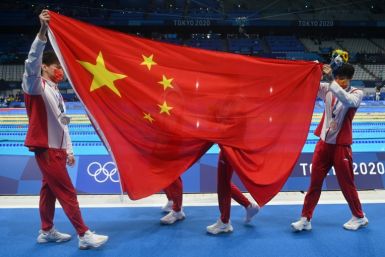Global Markets Overview - Jan. 28, 2016

What’s the deal with the ASX?
If the GFC has taught us anything, it’s that globalisation is a double-edged sword. On on hand, if one market or economy strengthens, this traverses the oceans and strengthens another market or economy due to foreign investment. Conversely, a market or economy that crashes comes to see that foreign investment as a liability.
That is why top-down thematics in the ‘new market world’ need to be your bedrock for investment and trading strategy - something we promote constantly.
So what are the macro thematics facing Australia in 2016?
· The consensus growth rate has been marked lower for 2016. The GDP estimate is 2.1% - well below trend.
· The housing-led recovery that began in 2013 is expected to moderate as new housing investment recedes along with capex investment, meaning consumption and government spending will need to do most of the lifting in the GDP equation.
· Exports remain unpinned by mining – a continuing soft spot in current conditions.
· Commodity prices to remain at GFC lows .
· Foreign investment flows – is Australia still an attractive place to invest?
· AUD – barring the USD, one would argue the AUD is overvalued against most G10 currencies.
Now, I would argue the majority of these thematics are priced in to the ASX. Oil and iron ore prices have decimated the cyclical sectors of energy and materials. This has seen the index weighting of energy falling to 4.9% and material 11.5% - this from a peak of 10% and 30% respectively in 2008.
That leads to the question: Where were the funds invested in materials and energy in 2008 switched out to?
The market cap changes above highlight the decisive change in investment strategy. The inverse correlation between materials and financials shows that the flow of funds from cyclical to defence began in earnest in 2011.
Several factors led to this switch trade: lending growth, stability in financial earnings, the housing recovery and (the main reason) dividend yield.
The transition from a China growth play to an income play in the post-GFC world saw the ASX become a bastion for those looking for above-bond-yield returns.
With the BoJ, Fed, ECB, BOE and even the RBA racing to the bottom on cash rates, the ASX’s average yield of around 4.9% was a very attractive investment option. However, the scramble for yield led to a predictable overshoot and a hyper-valuation in April last year, with the ASX reaching 5998. Since the April high, the ASX has lost 17.5%.
The correction has been justified. The macro thematics for Australia illustrate that point. However, the correction now sees the ASX as naturally valued now. Its P/E is more in line with the historical average, as its price to book and yield have also rebased to a positive level.
Some possible positives to watch in the ASX
· AUD tailwinds – if the AUD does shift to a more realistic level, earnings repatriations will improve, adding earnings growth.
· Globally, the low interest rate environment will remain – even with the Fed holding firm on its rate trajectory path, meaning the ASX remains a quasi-bond trade.
· M&As remain very attractive and consolidations, and growth trades are likely with lower equity prices
· Fiscal and monetary policy still has spare capacity, if required.
· Aggregated dividend yield of the ASX is at the highest level since 2011
(Source: Bloomberg)
This is an interesting trade situation - the ASX now has a yield of 5.27%. That compares to a cash rate of 2%, a US ten-year of 1.99% and an Aussie ten-year of 2.67%.
The yield attraction is clearly building and, in a global risk environment, the ASX has a baseline trade case. The risk, however, is yield policies. If the current progressive dividend policies of the major ASX firms were to change, the quasi-bond trade would change with it. And that is a risk.
I am positive the ASX will hold the 4850 point level - fundamentals suggest value will overwhelm the bear trade at this point. I would look to buy the ASX on weakness at the recent lows, with an expectation it will return to 5000 points on the quasi-bond trade. Any additional falls to global bond yields or cuts in global interest rates will make the yield trade of the ASX more compelling in the current macro thematic.
EVAN LUCAS Market Strategist
IG, Level 15, 55 Collins Street, Melbourne VIC 3000
D: +61398601748 | T: +61398601711www.ig.com
IG Markets
[Kick off your trading day with our newsletter]
More from IBT Markets:
Follow us on Facebook
Follow us on Twitter
Subscribe to get this delivered to your inbox daily






